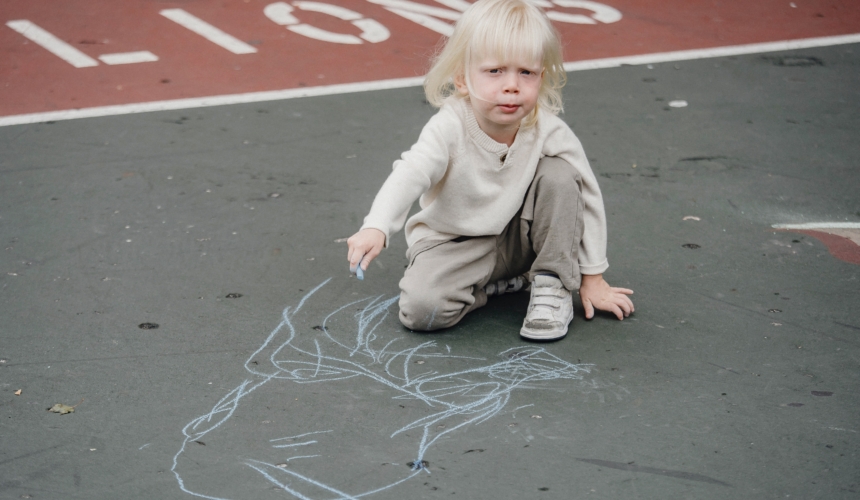

"A secure attachment is the ability to bond; to develop a secure and safe base"
Asa Don Brown
What is Attachment?
Attachment refers to the active emotional bond that develops between a child and a primary parent or caregiver(s) which sets the pattern for our early social development (Bowlby and Ainsworth).
The quality of this bond serves as a framework for children to build a personal strategy for how to respond to new situations, how to interpret social cues from others and how to detect and react to danger and threats. It is a key foundation of emotional regulation and helping us understand how to care for ourselves and others as well as how to adapt and survive.

Infants initially show attachment to their carers through four main behaviours:

How primary carers respond to these behaviours and how attuned they are to the child needs is crucial. Good attunement will result in calming anxious situations and reducing the levels of distress in the child. Poor attunement, where a parent/carer is unresponsive, inconsistent, or unavailable, can leave the child highly anxious and struggling to cope with new situations. If a caregivers responses are actively hostile towards the infant, this can leave the child with an on-going sense of the world being unsafe and threatening and their self-image of being unworthy or unlovable.
The behaviours and responses children display in novel situations or those that may generate anxiety contribute to general patterns of behaviour or ‘attachment styles’ that reflect the child’s experience and expectations of the world. Depending on the behaviours displayed, children may then be regarded as more securely or insecurely attached.
Children with secure attachment may: be contented, actively engaged able to seek reassurance, be comforted when worried or frightened, generally calm and empathic, be less disruptive than children with other attachment styles.
Children with ambivalent attachment may: be insecure, have difficulties focusing, ask a lot of questions, be suspicious of strangers or new teachers, be very stressed when separated from a parent/caregiver.
Children with insecure-avoidant attachment may show the following behaviours:
Children with disorganised attachment may show the following behaviours:
Attachment behaviours are most clearly seen and understood in infants and young children. As children become older, attachment becomes less about how they behave and more about what they think about themselves in relation to emotionally important people and the relationships they have with them. In adulthood, attachment refers to a state of mind rather than a pattern of behaviour.
Gradually, what an individual does becomes much less important than how they think, understand and speak about their experiences of care; what they have come to believe about themselves, their relationships and the world around them.
Early secure attachment with a main caregiver is important as it helps the developing child manage or ‘regulate’ their own emotional responses to situations. A securely attached child will tend to be able to navigate developmental stages in ways that:
While this process may seem straightforward, there are some factors that can influence how attachment develops, including:
The good news is that attachment behaviours are not completely ‘fixed’ and can be modified within new relationships; especially those that are warm, consistent and encouraging of reflection and insight. Just one secure attachment with a caring adult can make a really significant difference in a child’s life.
Why is it important for teachers to know about attachment?
A good understanding of attachment theory and research can help teachers, parents and other professionals to understand children and young peoples’ behaviours and offers insight into some children’s experiences of difficult and stressful family relationships. This in turn, can help build engagement with families and inform decision making that has the children’s best interest at heart. It can also help with understanding negative behaviours such as acting out or poor conduct in school situations that can lead to escalation and exclusion.
Some ideas that will be useful to keep in mind are:
Teachers’ wellbeing
As with all matters of wellbeing - taking time to focus on developmental processes such as emotional regulation, attachment, emotional intelligence & social confidence can help to build a wider understanding of factors outlook that impact on young peoples learning and wellbeing – and positively feed this into the interactions a teacher has with the young people they support. Whilst we are preparing ourselves to help others in this way – we must also look after ourselves. It is often through reflection on and understanding of our own mental health and wellbeing that we can be become truly effective in providing support to others. We’ve got some advice and guidance on this in the teachers wellbeing section.
If a teacher is feeling confident and comfortable with some of the foundations that have been discussed here, it may be helpful to look at further ways in which we might incorporate these insights into practical ways to work with young people and help them learn more about their brains, bodies and emotional states. Take a look at our sections on resilience, emotional regulation, self-esteem, and emotional intelligence to learn more about strength-based models of mental health that can support a young person’s wellbeing.
Attachment refers to the active emotional bond that develops between a child and a primary parent or caregiver(s) which sets the pattern for our early social development (Bowlby and Ainsworth). It is a key foundation of emotional regulation and helping us understand how to care for ourselves and others as well as how to adapt and survive.
Early secure attachment with a main caregiver is important as it helps the developing child manage or ‘regulate’ their own emotional responses to situations. A securely attached child will tend to be able to navigate developmental stages in ways that promotes their positive mental and physical health, helps build resilience in coping with difficult situations and anxiety, helps build and maintain trusting intimate relationships, encourages a growing sense of security and confidence and supports .
Research now overwhelmingly indicates that many emotional regulation issues and learning needs are interconnected. If a child is struggling with their school work it is important to consider both aspects. It may help to explore our sections on and for further information in this area.

( resources found)








How useful was this info?
Click on a star to rate it!
![]()
© Copyright Breathe 2020- 2024
Terms and Conditions | Privacy Policy
supporters & partners 



![]()
